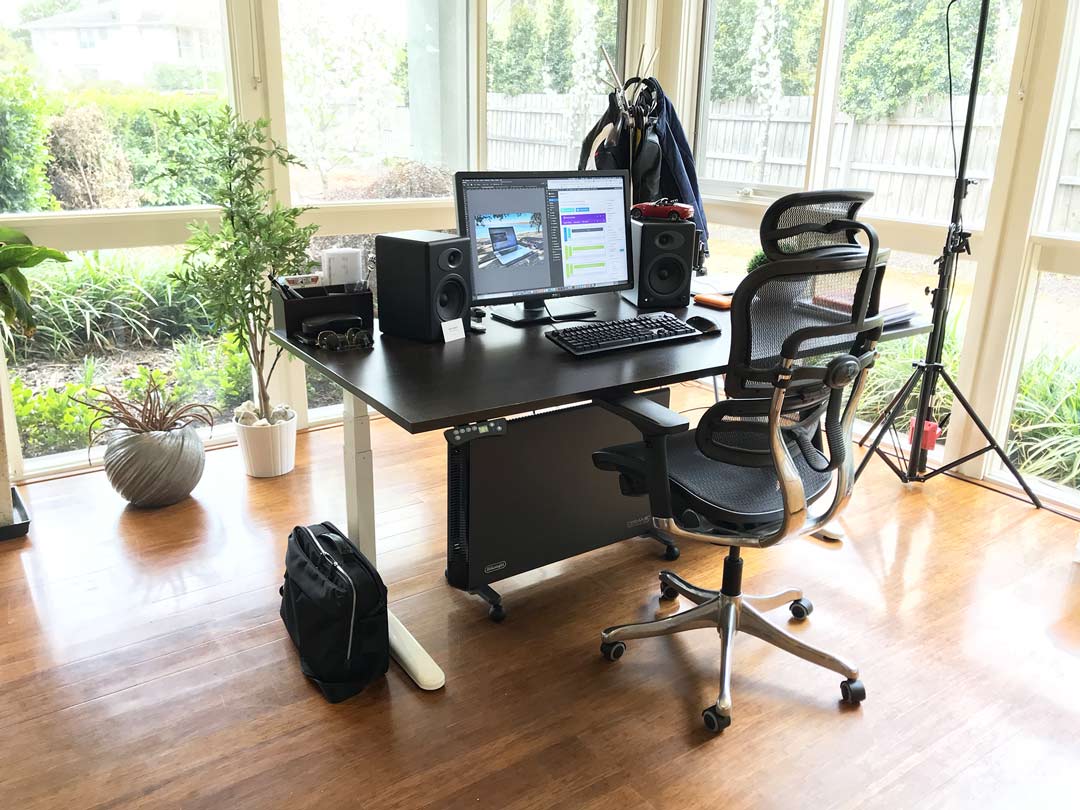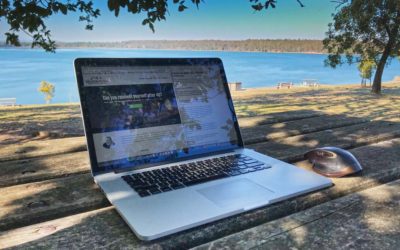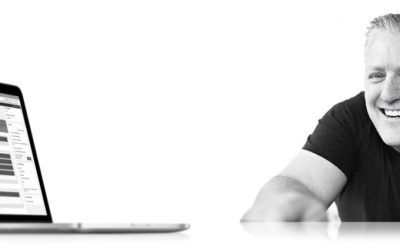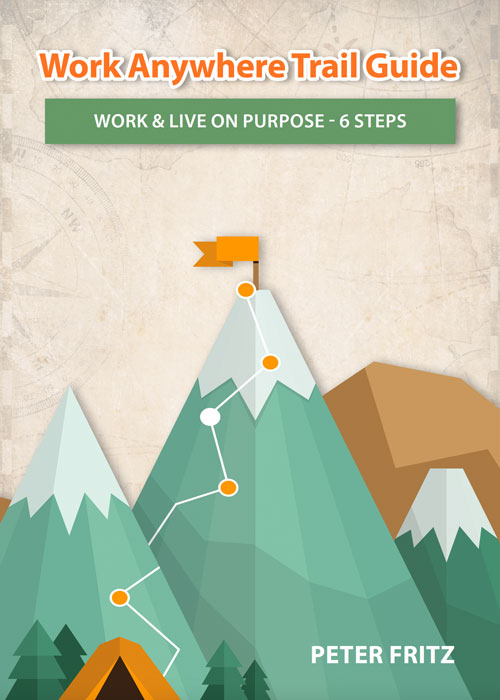[fusebox_track_player url=”https://www.buzzsprout.com/1079927/3707957-5-rules-for-working-from-a-home-office-074.mp3?blob_id=13805996&download=true” social_linkedin=”true” social_email=”true” ]
My good friend Duncan came to visit the other night. We chatted in the garage, drank beer and enjoyed a couple of cigars. It’s what I’d deem a very good night – not because of the booze or cigars (although they do enhance things), but because the conversation was so lively.
Like always, we talked about lots of things – cars, work, family, philosophy and our hopes for the future. So nothing unusual there.
But it was the discussion around work that got us fired up. You see, the way we work; the whole definition of going to work is changing, and we believe the old guard is struggling to keep up.
About 20 years ago, I re-engineered my life so I could work from my home office, and it was one of the best decisions I ever made.
Anyway, our chat got me thinking about why my decision to work from home has proved so successful. I suspect it’s different for everyone, but for me, it’s changed my life. It’s allowed me to spend a lot more time with my kids, and that alone makes it a winning deal.
Most of us waste a disproportionate chunk of our lives under fluorescent lights in an office that smells of photocopy paper and stale coffee. We sit through meetings about future meetings, and we speak in acronyms that sound impressive to each other but stupid to everyone else.
We leave our families in the morning to go to a place we don’t like, to do work we don’t enjoy, all so we can earn enough money to get away from it all once a year.
We live in the matrix. It’s an ingrained madness that doesn’t sit well with me. The truth is, it never has.
From my earliest days in the banking industry, I dreaded walking through that door. The smell of synthetic carpet and the hum of fluoro lights made me feel trapped and unsettled. Each time the doors opened and customers walked in, a lump of anxiety would rise from my stomach and lodge in my neck until the day was over and I was on my way home.
That’s no way to live. Not for anyone.
Working from a home office has given me my family. I walk my son to school every day and I pick him up when he’s done. It’s given me a space to be creative in a way that suits me best. My office is spacious and lit by the sun through six panes of glass. The ceiling is high and the smells of nature stream through an open window. I see greenery outside, and birds in the garden.

Lunch is three metres from where I sit (or stand, depending on how my electric desk is set), and I can set the heating or cooling to whatever temperature I want. I wouldn’t trade it for another $100,000 in annual income.
Matter of fact, that’s about what I dropped to live this kind of life, and I’ll never go back.
So when Duncan and I talked about his next career move, a big part of it focused on how he would work, rather than for whom. He recognises that autonomy and flexibility are valuable commodities, and he now wants more of both.
And thanks to technology, the dream is easier – and more beneficial to everyone – than ever before.
Every day, a new business is born that chooses to ignore old paradigms. Instead of an office building with rows of desks, they have a distributed workforce of motivated experts who work from anywhere they like. Instead of employees who clock on and look busy, they have people who are experts at GSD (Getting Shit Done).
For a traditional boss, this concept is frightening. It strips the veneer of perceived control and makes them accountable for only one thing – results. But it’s not a concept anymore. It’s reality, and it’s catching on fast.
For the switched-on executive with a healthy ego and a solid grip on progress, it’s a game-changer. The business becomes more agile, more responsive to market shifts, and it breeds a new kind of loyalty from his team. Staff who only do enough not to get fired, are replaced by specialists who are passionate about their work and want everyone to win.
The industrial revolution is over, and the connection economy, fuelled by passionate and creative humans – augmented by the Internet – is taking over.
Which brings me to the subject of what you need to work from your own home office. I’ll expand on this in a later post, but for now, here are my top five things you need to work from home. Unless you have all these covered, you’re going to struggle.
1 | Your employer or contract partner must see the value in it.
Employers fear the loss of control of and accountability from their team. They imagine you watching Netflix all day and eating ice cream in front of the fridge.
They worry you’ll take their money and give little in return.
This is understandable. They’ve spent much of their working lives using attendance as a yardstick, so they’ve forgotten that only one thing truly matters – results. Thus, it’s incumbent on you to prove you’re on the same page, to suggest what the results might be and then create an environment where they can scrutinise them. Tonnes of tools exist to make this easier, including:
- Asana
- Slack (I used this to work with an editor on a book project)
- Monday.com (I’ve used this, too, when it was Dapulse)
- Basecamp (what I use now)
- Trello
- An excellent comparison of project management tools
When you start to work from a home office, your employer stands to gain some very attractive financial rewards.
They have one less person to house. That means less floor space, one less desk, phone, chair, and perhaps, one less car space. If you go full native (as I did), they can also reduce outgoings like superannuation (401k), payroll tax, holiday pay, sick pay, RDOs and worker’s insurance.
And with tools like Skype, GoTo Meeting and Zoom, meetings are possible on shorter notice, and without the need for a venue. It’s a win-win.
2 | Your work area matters.
I don’t work well in a traditional office environment – the constant chatter drives me nuts. I know many others feel the same; that’s why they’ll get in early or stay back late to complete an important project. The thing is, if their environment was conducive to productive output, they wouldn’t need to.
Others enjoy the white noise of a busy coffee shop (just visit any urban Starbucks and see for yourself), and I can understand this. I think it’s because we know none of the conversations relates to us, so they’re easy to ignore. One of my favourite public places to work is on an aeroplane. The combination of travelling somewhere and the view from 40,000 feet inspires me.
The great thing about being a remote worker is you can tailor your work environment to suit yourself. I often play music while I work. Right now, I have Beneath the Skin and Atlas: Year Two on cycle.
The company that created Basecamp (see above) has 50 people living in 32 locations around the world. CEO, Jason Fried says on their website, “Our headquarters is in Chicago, but everyone at Basecamp is free to live and work wherever they want. Many of us love working remotely – we literally wrote the book on remote working!”
The important thing is to set aside an area that works best for you. Some days, I’ll work at 5 am on the dining room table. On others, I’ll head out in my car, throw the roof back and work through a difficult problem with my voice recorder in hand.
Either way, I tailor my environment to generate the right output, whether I choose to work from my home office that day or not. I don’t want to be busy – I want to be productive.
3 | Set boundaries – physical and virtual.
I do some of my best work before dawn when everyone’s asleep. It’s a boundary of my own design.
When the rest of the house stirs, I retire to my office and close the door. My wife and son know not to disturb me unless it’s an emergency. My son is seven, though, so I have to remind him a lot – especially during school holidays.
Some people ask me how I stay on task when the fridge, the TV and the backyard pool are within easy reach. This has never been a problem for me. Like the old days when mum served Brussel sprouts, I’ve always eaten my veggies first. Or covered them in vinegar to drown the taste… What I mean is, work is first, and fun comes later.
If anything, I work too much. And for some of us, that’s the real trap.
When your office is in your home, it’s common to work longer than you should because it’s so easy to slide in front of your computer and do ‘just one more thing.’
So I set blocks of time to do certain things. For example, I only check email three times a day, and never after 4:30 pm – unless I’m expecting something important (not ‘urgent’ or ‘tempting’). I tell my son when I’ll be ready to play and I stick to it whether he badgers me or not.
4 | Present yourself as a business.
That means, no background noise during calls, no Hawaiian shirts in video hook-ups and respect for other people’s working hours (don’t text/email people at 9:00 pm).
It also means tracking the time you spend on tasks (I use Harvest). It’ll help you, and it’ll comfort your boss, too. If you work for more than one business, it’s essential.
Use professional accounting software to manage expenses and generate invoices (I use XERO). Set due-date parameters for all your clients and follow up on overdue invoices. You’re running a business, not a house of favours.
Also, working from home (or a park bench by a lake) shouldn’t make you less accessible. Make sure you’re always reachable by phone and the Internet. And if you’re going to travel through a black spot, let your colleagues know in advance.
5 | Working from a home office can make you sick.
Working from home is fantastic, but there are a number of ways you can screw this whole thing up, and ruining your health is one you mightn’t have considered.
Once you’re in control of your work environment, it’s critical that you manage yourself, too.
In a traditional office setting, you might get out of your chair 20 times a day to converse with colleagues. When you work from home, it’s all handled from your desk. As a remote worker, this lack of movement poses a genuine health risk. Sitting for prolonged periods is as bad as smoking. The ramifications are startling, and you shouldn’t ignore them.
My friend and fitness badass, Jonathan Meade, offers valuable strategies for mitigating these risks through a series of simple movements. Check out Uncaged Human, and subscribe for access to some of his brilliant guides on reversing the years of damage.
In addition, here are some things I’ve done that work well for me.
- I follow a strict morning routine that sets me up for the day. It includes water, tea, time outside, exercise and writing – in that order. By setting a daily habit, I start the day on the right foot, with the right mindset.
- I have an electric height-adjustable desk and I switch from sitting to standing a few times each day. This single acquisition has changed my life, and I no longer feel stiff, cramped or lethargic. I listen to my body, and as soon as I’m uncomfortable, I hit a preset button and switch to the other position. I even have one for squatting.
- I walk around the neighbourhood most mornings and afternoons – for at least 45 minutes total a day. It gets the blood flowing, the lungs working and stops the largest muscles from atrophying. It also clears the head (or fills it with new knowledge via podcasts), and it draws vitamin D from the sun.
- A large glass of filtered water sits on my desk, and I make sure I drink and refill it at least half a dozen times each day.
- When my concentration wanes, I get up and walk around or stretch. Sometimes, I go out to the backyard and take a few deep breaths. If I’m smashed, I’ll take a 20-minute nap using the PZIZZ app or meditate for 10 minutes with Headspace.
- The Pomodoro technique, where you work in 25-minute stints followed by a 5-minute break, is also helpful. You do four of these, and then you take a 15-minute break. Developed by Francesco Cirillo in the late 1980s, this method can keep you fresher for longer. I’ve tried it many times using a couple of apps and if works. Today, I’m very conscious of my working rhythms, and I take regular breaks throughout the day.
- I snack on nuts, fruit and yoghurt. Okay, and sometimes pizza. But most of the time, I keep it light and healthy. Keeping the water intake up mitigates most of the snacking.
- I often change locations. Staring at the same thing for hours/days on end, no matter how pleasant, can get monotonous. I imagine Amal Clooney even tires of looking at George, or Ryan Reynolds at Blake Lively… Since all great work is a creative process, it’s critical to maintain the creative spark. I do this by switching locations throughout the day, usually ending with me at my camp table in the garage at 6:00 pm with a Shiraz in hand. For me, it ensures my last hour or two of work is as good as the first.
To work from a home office instead of a cubicle in the city is a privilege and a responsibility. It’s been the single biggest thing to impact my personal and working life, and it has brought much-needed balance between them.
Because of it, I’m more productive, more inspired and more effective in every area that matters – as a worker, husband and parent.
I unplugged myself from the matrix more than 15 years ago. But back then, it required a lot of trust on the part of my employer; trust I made certain never to break. Today, it’s much easier – at least from a technical standpoint – to remain accountable, accessible and productive.
For many employers, the excuses have all but gone. The connection economy is here to stay. The remote worker is fast becoming the new norm, and lives (and businesses) are transforming because of it.
Choosing to work from home afforded me opportunities to live and grow in ways that the traditional model couldn’t. It gave me a LIFE.
Now ask yourself, ‘How would my life change if I worked from home?’
RECOMMENDED READING
The Art of Non-Conformity – by Chris Guillebeau
Choose Yourself – by James Altucher
Tribes – Seth Godin
Working from home – my typical day as a remote worker.
[smart_track_player url="http://traffic.libsyn.com/midlifetribe/My_Typical_Day_as_Remote_Worker_-_068.mp3" background="#f2f2f2" social_gplus="false" social_linkedin="true" social_email="true" ] I value working from home more than money, prestige or a fancy job title....
Why I work from home, and why it might be right for you, too.
[smart_track_player url="http://traffic.libsyn.com/midlifetribe/Why_I_work_from_home_-_065.mp3" background="#f2f2f2" social_gplus="false" social_linkedin="true" social_email="true" ] My corporate life began in 1984 at the age of sixteen. Standing at the corner of...
Download the Guide
Step 1: Work from home.
Step 2: Create a life.




